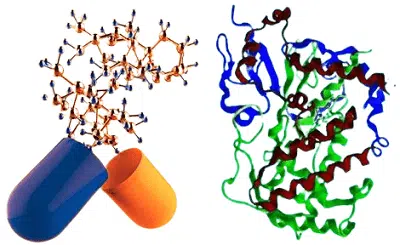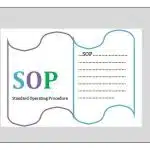Computer-Aided Drug Design (CADD) is a field that leverages computational methods to discover, develop, and analyze drugs and active molecules. CADD can significantly reduce the time and cost associated with drug discovery and development by predicting how drugs interact with biological targets before they are synthesized and tested in the lab.
Table of Contents

Key Techniques in CADD
1. Structure-Based Drug Design (SBDD)
Molecular Docking: A computational technique that predicts the preferred orientation of a small molecule (ligand) when bound to a protein’s active site. This helps identify potential inhibitors or activators of the protein function.
Molecular Dynamics (MD) Simulations: Simulates the physical movements of atoms and molecules to study the stability of drug-protein complexes over time. It provides insight into the binding affinity and conformational changes of molecules.
Pharmacophore Modeling: Identifies the essential features of a molecule that are responsible for its biological activity. This model can be used to screen databases of compounds for potential drug candidates that share these features.
2. Ligand-Based Drug Design (LBDD)
Quantitative Structure-Activity Relationship (QSAR): A method that correlates chemical structure with biological activity to predict the properties of new compounds. QSAR models can be used to predict the potency, efficacy, and toxicity of drug candidates.
Similarity Searching: Uses the concept that similar molecules tend to have similar biological activities. This technique screens databases for compounds with similar structures to known active compounds.
3. Virtual Screening
High-Throughput Virtual Screening (HTVS): Rapidly screens large libraries of compounds against a target using docking, QSAR, or pharmacophore models to identify potential hits.
Fragment-Based Screening: Involves identifying small chemical fragments that bind to the target protein, which can then be optimized and combined to create a potent drug candidate.
4. De Novo Drug Design
Generative Models: Uses algorithms to design new molecules from scratch, optimizing for desired properties such as binding affinity, solubility, and selectivity.
Applications of CADD
- Lead Discovery: Identifying novel compounds that could potentially become drug candidates.
Lead Optimization: Refining the chemical structure of lead compounds to improve their efficacy, reduce toxicity, and enhance pharmacokinetic properties.
Predicting ADMET (Absorption, Distribution, Metabolism, Excretion, and Toxicity): Estimating how a drug will behave in the body, which is crucial for assessing its suitability as a therapeutic agent.
Repurposing Existing Drugs: Finding new therapeutic uses for existing drugs by predicting their interaction with different targets.
Advantages of CADD
Efficiency: Accelerates the drug discovery process by filtering out less promising candidates early on, saving time and resources.
Cost-Effectiveness: Reduces the need for expensive laboratory experiments by prioritizing compounds with a higher likelihood of success.
Precision: Enables the design of highly specific drugs that can precisely target diseased cells or proteins, reducing off-target effects.
Challenges in CADD
Data Quality: The accuracy of CADD predictions heavily relies on the quality of the input data, such as protein structures and experimental activity data.
Complexity of Biological Systems: Biological systems are highly complex, and computational models can only approximate this complexity. This can lead to discrepancies between predicted and actual drug behaviors.
Computational Limitations: Some methods, like molecular dynamics, are computationally intensive and require significant processing power and time.
Overall, CADD has become an invaluable tool in modern drug discovery, complementing traditional experimental approaches and opening new avenues for the development of innovative therapeutics.
Computer-Aided Drug Design (CADD) software
There are several Computer-Aided Drug Design (CADD) software packages widely used in academia and industry, each offering different functionalities and specializations. The choice of the best CADD software depends on the specific needs of the user, such as structure-based drug design, ligand-based drug design, virtual screening, or molecular dynamics simulations.
Here’s an overview of some of the most popular and highly regarded CADD software tools:
1. Schrödinger Suite
Features: Schrödinger offers a comprehensive suite of tools for molecular modeling, including Glide for molecular docking, Maestro for visualization and modeling, Prime for protein structure prediction, and Desmond for molecular dynamics simulations.
Advantages: Highly regarded for its accuracy, user-friendly interface, and comprehensive support for both SBDD and LBDD. It also includes tools for quantum mechanics/molecular mechanics (QM/MM) simulations, which can provide detailed insights into molecular interactions.
Best for: Researchers looking for an all-in-one package with high accuracy and support for advanced simulations.
2. MOE (Molecular Operating Environment)
Features: MOE offers a wide range of functionalities, including molecular docking, pharmacophore discovery, QSAR modeling, and protein structure analysis. It also supports cheminformatics and data visualization.
Advantages: MOE is known for its versatility and ease of integration into various workflows. It provides a balance between high performance and ease of use.
Best for: Academics and industry professionals who need a flexible tool that can handle multiple aspects of drug design and discovery.
3. OpenEye Scientific Software
Features: OpenEye provides several CADD tools, such as FRED for docking, ROCS for shape-based screening, and OMEGA for conformer generation. Their software emphasizes ligand-based virtual screening and cheminformatics.
Advantages: Known for its speed and accuracy in virtual screening, particularly shape-based methods, and large-scale virtual screening tasks.
Best for: Large-scale virtual screening projects and applications where shape-based methods are critical.
4. Autodock Vina
Features: Autodock Vina is an open-source software for molecular docking and virtual screening. It uses a scoring function to predict the best binding poses of small molecules to a protein target.
Advantages: Free to use, widely accessible, and provides reasonably accurate docking results with fast performance. It is especially popular in academic research.
Best for: Researchers looking for a cost-effective solution for molecular docking.
5. Gold (Genetic Optimization for Ligand Docking)
Features: GOLD uses a genetic algorithm to explore the binding conformations of a ligand to a protein’s active site. It is known for its flexibility in accommodating various binding site shapes and sizes.
Advantages: Offers high-quality docking results with a flexible scoring function that can be customized to improve prediction accuracy.
Best for: Those who need a robust and flexible docking tool that can handle complex binding sites.
6. GROMACS (GROningen MAchine for Chemical Simulations)
Features: GROMACS is a highly efficient software package for molecular dynamics simulations. It supports a wide range of force fields and can simulate large biomolecular systems.
Advantages: Open-source, very fast, and widely used in the scientific community for molecular dynamics simulations.
Best for: Researchers focused on molecular dynamics simulations and those needing to simulate large biomolecular systems over long time scales.
7. AMBER (Assisted Model Building with Energy Refinement)
Features: AMBER is a suite of molecular simulation programs that includes tools for molecular dynamics simulations, free energy calculations, and protein-ligand binding studies.
Advantages: Known for its comprehensive set of tools for simulations and its strong performance in protein-ligand binding studies and free energy calculations.
Best for: Advanced users needing detailed molecular dynamics simulations and free energy calculations.
8. ROSETTA
Features: Rosetta is a flexible software suite that includes tools for protein structure prediction, protein-protein docking, and protein design. It is also used for ligand docking and drug design.
Advantages: Highly versatile with a strong focus on protein modeling and design, offering advanced capabilities in protein-ligand docking.
Best for: Users interested in protein modeling and design, and those who require a tool that can handle complex protein-ligand interactions.
9. Discovery Studio
Features: Discovery Studio provides tools for molecular modeling, simulation, and visualization, with functionalities for molecular docking, pharmacophore modeling, QSAR, and protein modeling.
Advantages: Offers a comprehensive set of tools within a user-friendly graphical interface, making it accessible to both new and experienced users.
Best for: Integrated drug discovery projects that require multiple types of analysis and visualization.
Conclusion
Choosing the best CADD software depends on several factors, including the specific needs of the project, the available budget, and the user’s expertise level. For example, Schrödinger and MOE are excellent choices for comprehensive drug design projects, while Autodock Vina and GROMACS are popular in academia for specific tasks like molecular docking and molecular dynamics simulations.
Frequently Asked Questions (FAQs)
What is Computer-Aided Drug Design (CADD)?
Computer-Aided Drug Design (CADD) is a method used in pharmaceutical research and development to discover and design new drugs more efficiently. It involves using computational tools and algorithms to model and predict the interactions between drugs and biological molecules, such as proteins. CADD helps in identifying potential drug candidates by analyzing their chemical properties, optimizing their structure, and predicting their efficacy and safety before physical testing.
How does CADD contribute to the drug discovery process?
CADD significantly enhances the drug discovery process by enabling researchers to virtually screen large libraries of compounds and identify those with the highest potential for success. It reduces the need for extensive experimental testing by simulating drug interactions and predicting their biological effects. This computational approach accelerates the identification of promising drug candidates, optimizes their chemical properties, and helps in designing drugs that are more likely to be effective and safe. Ultimately, CADD helps to streamline the development process, reduce costs, and improve the likelihood of discovering successful new therapies.

Abdus Sobhan Salim is professional experienced pharmacist in pharmaceuticals, author and founder of pharmabossbd.com, the first Bangladeshi pharmaceutical blogger since 2019.




Hello!
20 is redeemable for F R E E. Maximum redemption amount is $200. Online Slots Fishing Chess Major Popular Games Simply write FREEPLAY. Find out more – https://discord.gg/tzkbqMGUks
Good luck 🙂
Thanks